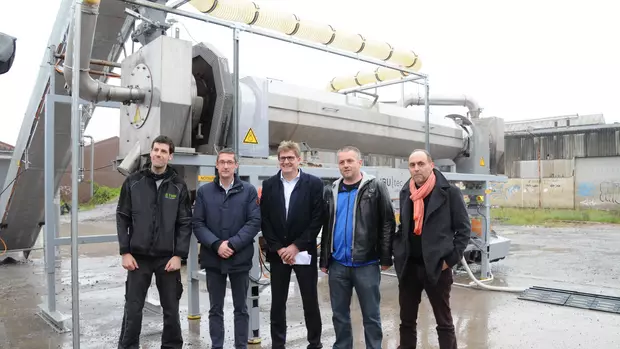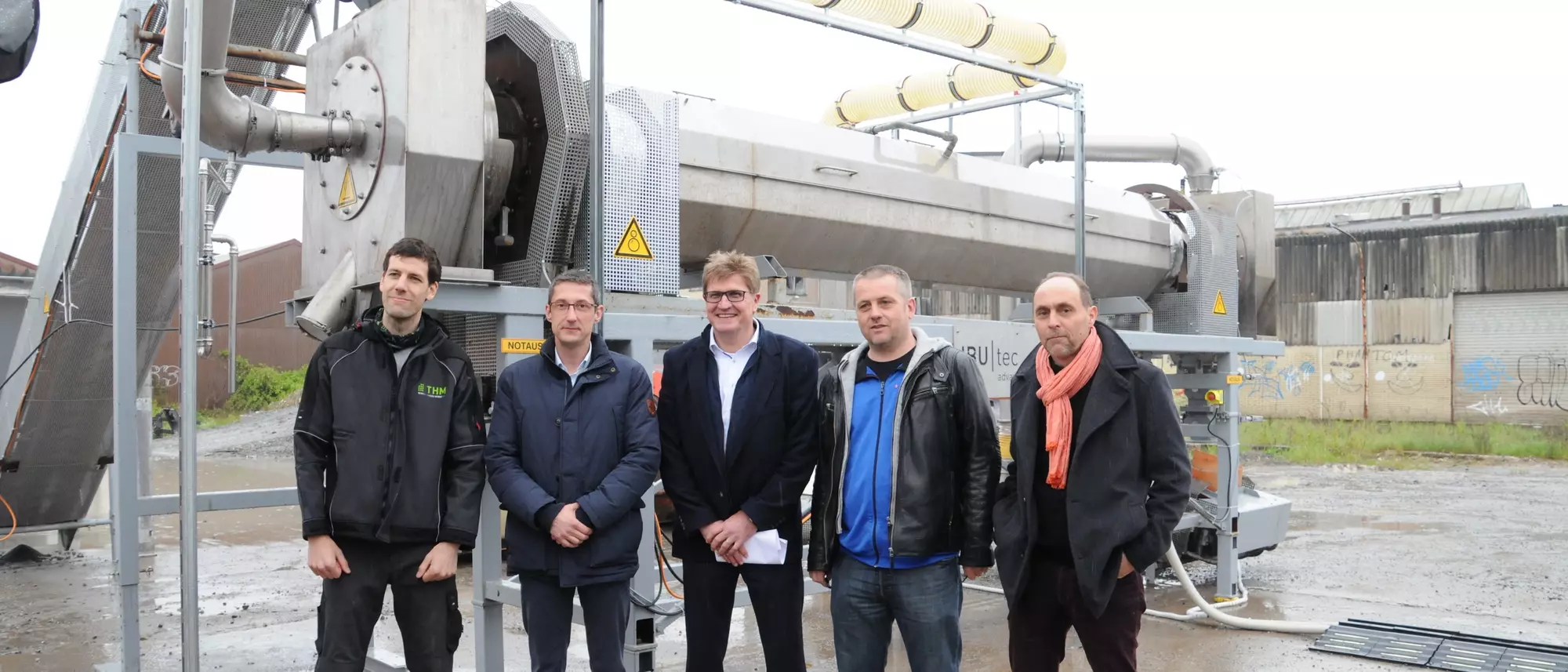
The Giessen municipal utilities site on the former Gail site is a hive of activity these days. Together with its partner Ludwig Kreiling GmbH und Co KG, SWG is building a plant for the accelerated carbonatisation of ash from the thermal residue treatment and energy utilisation plant (TREA). The plant is being built as part of a research project with the Technical University of Central Hesse (THM). The project manager is Prof. Dr Harald Weigand from the Competence Centre for Energy and Environmental Systems Engineering at THM. The state of Hesse is funding the project.
Thermal waste utilisation plants produce electricity and heating energy. This saves correspondingly large quantities of fossil fuels. The simultaneous use of heat and electricity reduces fuel consumption by up to 40 per cent compared to separate production - heat in the boiler, electricity in the power plant.
The generation of electricity and heating energy produces 5.2 million tonnes of ash per year in Germany. The environmental compatibility of this ash depends crucially on how easily the heavy metals and salts it contains dissolve in water. The lower this leachability, the cheaper the disposal.
This is precisely where the project comes in, as the ashes are aCO2 trap and the incorporation of the gas reduces the leachability of lead, copper or zinc, for example, from the solid material by up to 99.5 per cent. The project partners want to accelerate this so-called carbonatisation. To this end, the ash in the demonstration plant on the former Gail site is channelled through a rotary reactor. At the same time, theCO2-containing waste gas from the neighbouring combined heat and power plant is fed into this reactor. "We know that we can generate the same carbonation effect in less than an hour that takes several months under natural conditions," explains research assistant Felix Brück, who is completing his doctorate as part of the project. "This time-lapse effect allows integration into the existing residue management of incineration plants such as the TREA. The ash quality improves by up to two landfill classes, and it may even be possible to use it as a substitute building material."
The trial operation of the plant was authorised by the regional council for a period of three months. "During this time, we hope to be able to confirm the results of the complex experiments in the THM laboratories on a full scale," says Matthias Funk, Technical Director of Stadtwerke Gießen.
The research project will run until the end of 2017 and has a total volume of 575,000 euros. It is being supported as part of funding line 3 of the Hessian "State Offensive for the Development of Scientific and Economic Excellence" (Loewe). With this programme, the state government subsidises projects in which universities work together with small and medium-sized Hessian companies.

